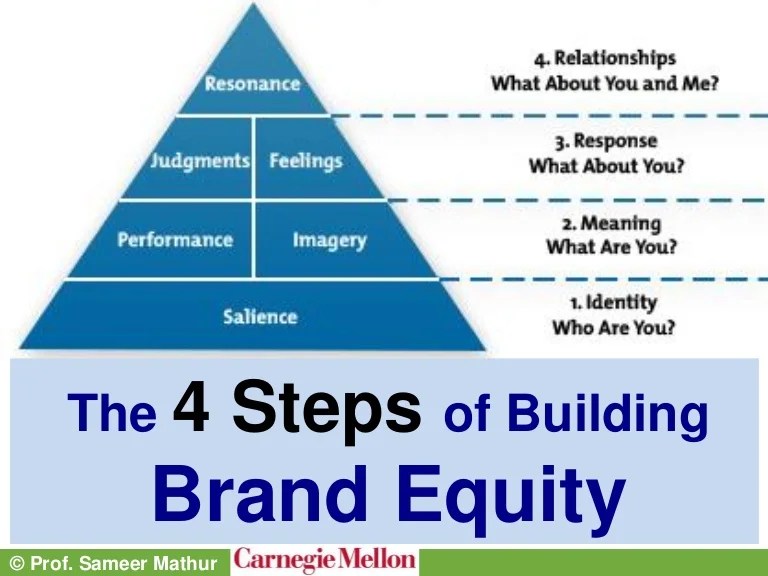Building Brand Equity sets the stage for success in the business world. From creating a loyal customer base to influencing purchasing decisions, this topic delves into the core elements that define a strong brand presence.
Exploring the strategies and challenges of establishing brand equity, this discussion unveils the intricate world of branding in today’s competitive market.
Importance of Building Brand Equity
Building brand equity is crucial for businesses as it helps to create a strong and loyal customer base, differentiate from competitors, and ultimately drive sales and revenue. A strong brand can command higher prices, attract top talent, and withstand crises more effectively.
Examples of Companies with Strong Brand Equity
- Apple: Known for its innovative products, sleek design, and strong brand loyalty.
- Nike: Recognized globally for its quality athletic gear and powerful branding.
- Coca-Cola: Iconic brand with a long history of effective marketing and consumer connection.
Impact of Brand Equity on Consumer Behavior, Building Brand Equity
Brand equity influences consumer behavior by creating trust, credibility, and emotional connections with the brand. Consumers are more likely to choose a brand they trust and perceive as high-quality, leading to repeat purchases and brand advocacy. A strong brand can also influence purchasing decisions, even when faced with competing options.
Strategies for Building Brand Equity

Building brand equity requires a strategic approach that involves various key strategies such as consistent branding, offering quality products/services, and implementing customer loyalty programs. These strategies play a crucial role in shaping the perception of a brand and establishing a strong connection with consumers.
Consistent Branding
Consistent branding across all touchpoints is essential for building brand equity. This includes maintaining a unified brand image, messaging, and visual identity to create a cohesive brand experience for consumers. By consistently reinforcing brand values and promises, companies can build trust and credibility with their target audience.
Quality Products/Services
Delivering high-quality products or services is a fundamental strategy for building brand equity. When customers consistently receive value and satisfaction from a brand’s offerings, they are more likely to develop a positive perception and loyalty towards the brand. Quality not only attracts new customers but also retains existing ones, contributing to long-term brand success.
Customer Loyalty Programs
Implementing customer loyalty programs can help strengthen brand equity by rewarding customers for their repeat purchases and engagement. These programs not only incentivize customer loyalty but also create opportunities for brands to gather valuable feedback and insights from their most loyal customers. By fostering strong relationships with customers, brands can increase customer lifetime value and advocacy.
Role of Advertising and Marketing
Advertising and marketing play a crucial role in building brand equity by creating brand awareness, shaping brand perceptions, and influencing consumer behavior. Through strategic campaigns and messaging, companies can communicate their brand values, differentiate themselves from competitors, and build a strong brand identity in the minds of consumers.
Social Media and Online Presence
In today’s digital age, having a strong social media presence and online visibility is paramount for enhancing brand equity. Social media platforms provide brands with a direct channel to engage with their audience, share brand stories, and build relationships with customers. By actively participating in online conversations and maintaining a positive reputation, brands can strengthen their brand equity and reach a wider audience in real-time.
Measuring Brand Equity
Brand equity is a crucial aspect of a business’s success, and measuring it accurately is essential to understand the value of a brand in the market. Various methods are used to measure brand equity, including brand valuation, brand awareness surveys, and customer loyalty metrics.
Brand Valuation
Brand valuation is a method used to determine the financial value of a brand. This involves assessing the overall strength of the brand, its recognition in the market, and the impact it has on consumer behavior. By assigning a monetary value to the brand, businesses can understand the tangible benefits it brings to the company.
Brand Awareness Surveys
Brand awareness surveys are conducted to gauge how familiar consumers are with a brand. These surveys typically measure brand recall, recognition, and association with specific attributes. By analyzing the results of these surveys, businesses can assess the level of awareness their brand has in the market.
Customer Loyalty Metrics
Customer loyalty metrics, such as Net Promoter Score (NPS) and customer retention rates, are used to measure the loyalty of customers towards a brand. These metrics help businesses understand how satisfied customers are with the brand and how likely they are to recommend it to others. By tracking customer loyalty, businesses can assess the strength of their brand in retaining customers.
Tracking brand equity over time is crucial as it provides insights into the effectiveness of marketing strategies, brand positioning, and overall brand performance. By monitoring changes in brand equity, businesses can identify areas for improvement and make informed decisions to enhance their brand value.
There are several tools and software available to help businesses measure their brand equity effectively. Examples include Brandwatch, BrandZ, and Nielsen Brandbank. These tools provide data analytics, brand monitoring, and market research capabilities to track brand performance and assess brand equity accurately.
Challenges in Building Brand Equity

Building brand equity is not without its hurdles. Businesses often face various challenges that can hinder their efforts to establish a strong and reputable brand. Factors such as negative publicity, brand dilution, and changing consumer preferences can significantly impact brand equity. It is crucial for companies to be aware of these challenges and develop strategies to overcome them in order to maintain a positive brand image.
Negative Publicity
Negative publicity can tarnish a brand’s reputation and erode its equity. Whether it’s a product recall, a public relations crisis, or unfavorable reviews, handling negative publicity effectively is essential. Companies must be transparent, proactive, and responsive in addressing issues to mitigate the impact on brand equity.
Brand Dilution
Brand dilution occurs when a brand extends its product line or enters new markets, potentially weakening its core identity and value proposition. To prevent brand dilution, businesses should carefully manage brand extensions, ensure consistency in messaging, and prioritize maintaining the brand’s unique positioning and differentiation.
Changing Consumer Preferences
Consumer preferences are constantly evolving, driven by trends, societal shifts, and emerging technologies. Adapting to changing consumer preferences while staying true to the brand’s essence is a delicate balance. Companies must conduct market research, engage with customers, and innovate to meet evolving needs and expectations without losing sight of their brand identity.
Strategies for Overcoming Challenges
To overcome these challenges and maintain a strong brand image, businesses can implement strategies such as enhancing brand transparency, strengthening brand guidelines, conducting regular brand audits, leveraging social media for brand monitoring, and fostering brand advocacy among employees and customers. By being proactive, adaptive, and customer-centric, companies can navigate challenges in building brand equity effectively.





